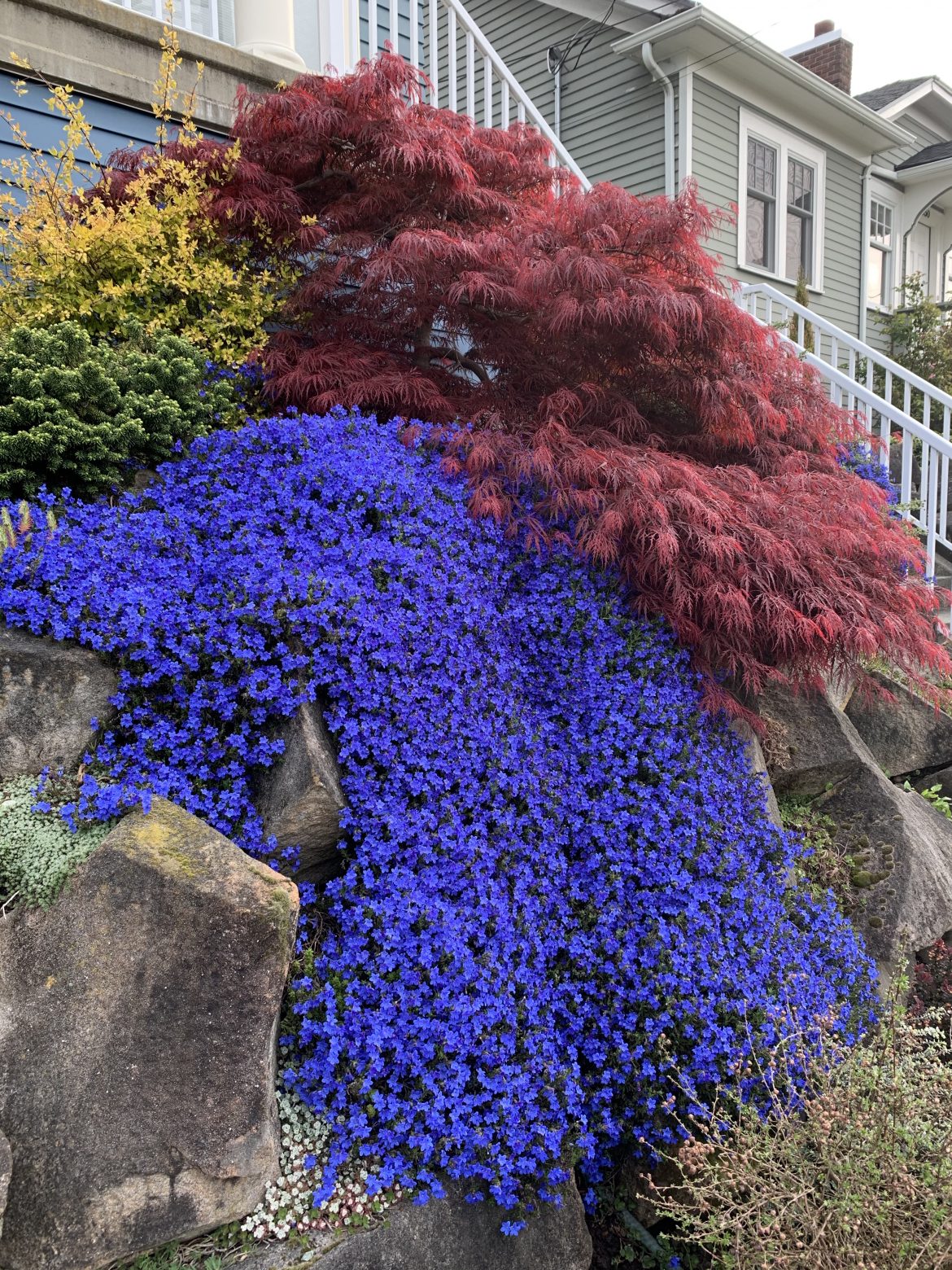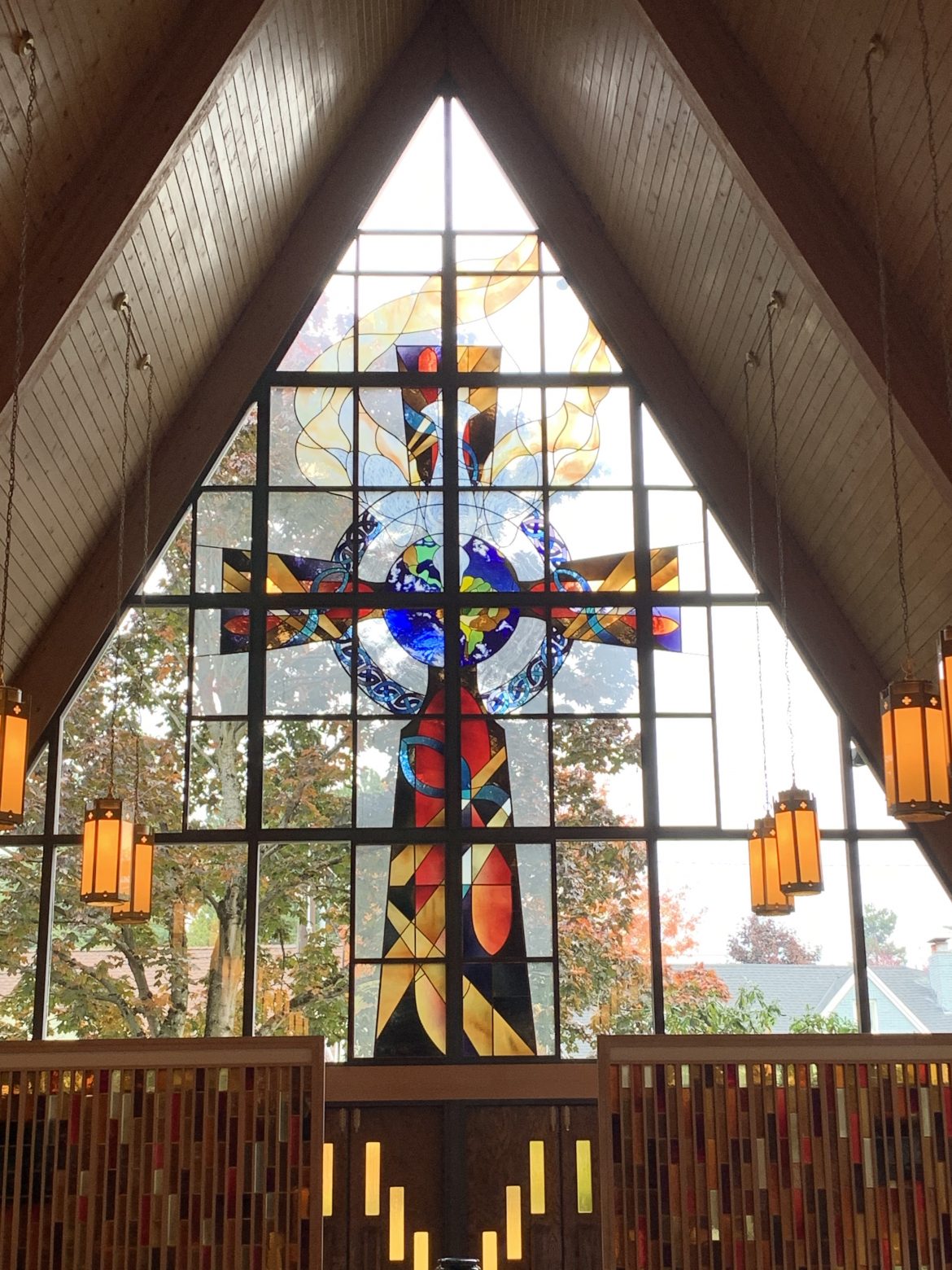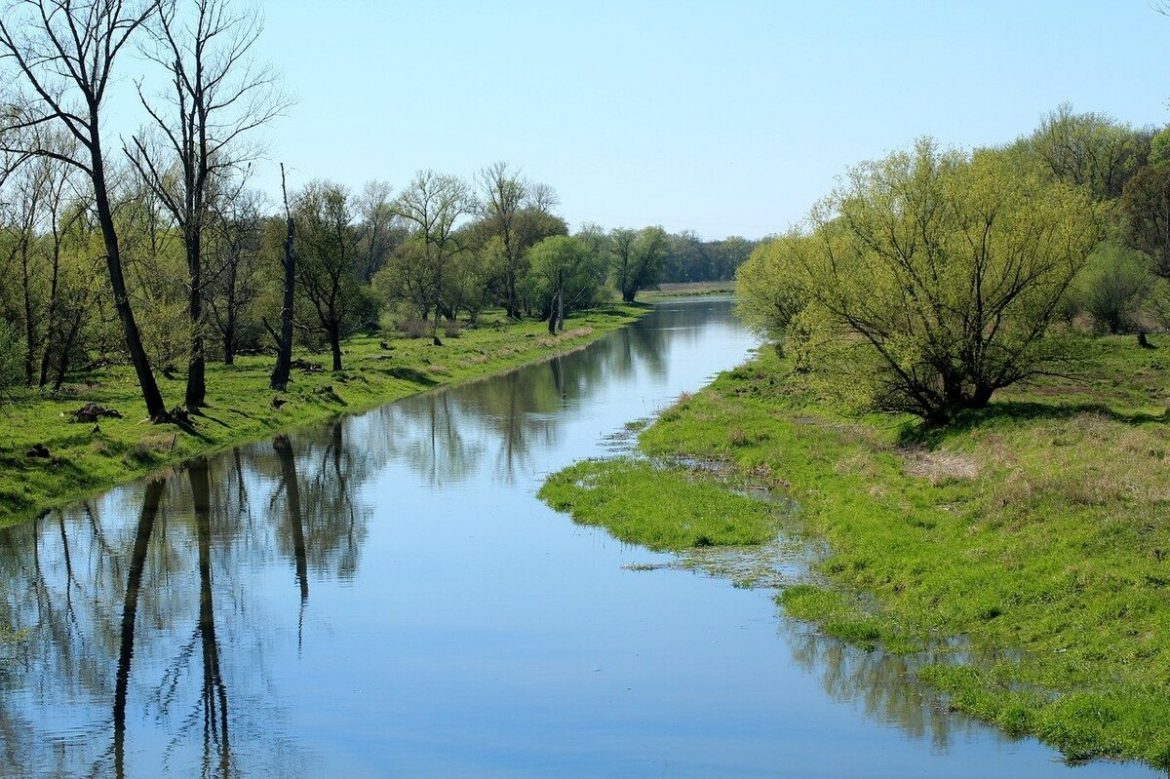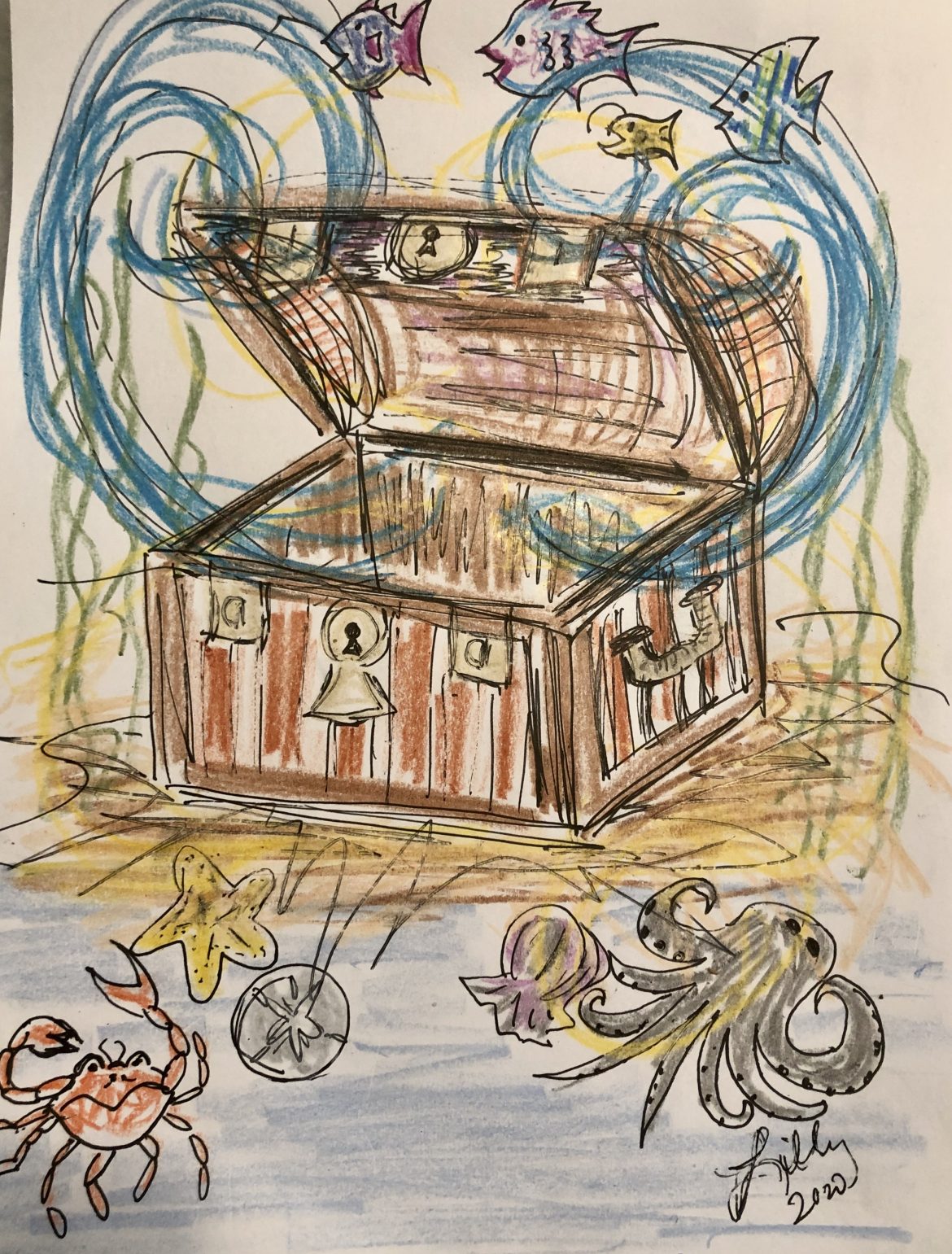by Emily Huff
“To raise awareness of the importance of pollinators, the threats they face and their contribution to sustainable development, the UN designated 20 May as World Bee Day.”
When I signed up to share something for this day, our country had not yet seen “murder hornets” in the headlines. We now know that these murder hornets have come to the US and could be a threat to honeybees (along with pesticides and other challenges they already face) which are vital to our agriculture. This reveals the complexity of the ecosystems in which we live and the interconnectedness our world is built upon.
In honor of this day, I wanted to share a prayer from one of my favorite books of liturgies called Every Moment Holy. I think you will see how this prayer is certainly a blessing for the bees, but it is also a blessing for us all today to notice the world around us, to see the delicate balance needed in creation for sustainability and to hear the call to take care of the world God has given us.
A LITURGY FOR THE
Keeping of Bees
Together: We thank you, O God, for the blessing of bees,
Leader: for the wonder of their work,
for the sweetness of their offerings,
and the delight of their harvest.
People: We thank you, O God, for the industry of the hive,
which is like a picture of the kingdom of heaven, always
at work, in ten million places unseen.
We thank you too for the small
comedy of the creatures,
for the humor of their constant severity,
for the buzz and the bumbling of bees
in flight, for the sight of bees bending
slender stalks to harvest in the blooms,
their feet shod in bristling boots of gold,
their backs fuzzed with bright yellow dust
that is the color of joy made visible.
So varied are your creatures, O God!
So wise your creations!
For the blessing of bees we thank you:
for their bright and varied stripes,
for the wisdom of their queen,
and for the potent sting you have
granted them to guard the life of the hive
against the harms of a nature now
fallen and hostile.
We thank you for imbuing them with
an ingenuity of architecture
to build the perfect geometry of the comb,
a golden cathedral that cannot be
accounted an accident.
We thank you, O God,
For the miracle of bees in their labors,
For their tireless industry-
May it inspire us to serve;
for their generosity-
may we also produce enough to share.
Bless these, your creatures,
Which you have given into the service
of your image bearers.
May they be fruitful.
Bless these, your creatures,
May their honey be plentiful and sweet.
May they find in fields of clover and wild
bloom a bountiful harvest of nectars,
that we might gladly share the abundance
of their labors, delighting in
the sustenance and small pleasures you
have provided us through them.
Bless these bees, O God,
and bless their keepers.
For all creatures are yours, bee
and keeper alike. Together may
our co-labors resound
to your praise and glory.
Amen.
Every Moment Holy, by Douglas Kaine McKelvey, www.EveryMomentHoly.com
by Rodney Marsh
“But if you do that, we won’t be able to see your beautiful face.” That’s what I nearly said when advising a group meditation member to switch off their video in Zoom to avoid the connection ‘falling out’. I didn’t say it, but I thought it. I know why I thought it too. I missed the connection with God that came through seeing an image of this person. It is true. Every human face bears the divine image and is therefore beautiful in their own unique way. A deeper connection is missing when we cannot see their face. Our Zoom meditation group meets for thirty minutes once a week. Twenty-five minutes of that time is spent in silence. Yet a connection, (communion is the Biblical word for it) has been built between us – a connection of trust and respect. How? Not by verbal communication but by simply ‘being’ together in silence. Our communion is more deeply shared by video because we can see each person’s unique, beautiful, made-in God’s-image face. For over a hundred years we have been able to ‘ring’ family and now, during the Corona virus lockdown, we are thankful to be able to see digital images the faces of the people we love and who love us. What a wonderful gift. But as with all gifts, a gift that can be misused (or not used).
So, a warning: an icon (or digital image of a person) can be a vehicle, but it is not the person. Whether the person you see over Zoom or in real life is Christ to you depends on your view. So, when Jesus said:
Your eyes are windows into your body. If you open your eyes wide in wonder and belief, your body fills up with light. If you live squinty-eyed in greed and distrust, your body is a dank cellar. If you pull the blinds on your windows, what a dark life you will have! (Matt 6:22,23 MSG),
he placed the emphasis on our quality of looking. The gift to learn to look and see the beauty of another person’s humanity (God’s beauty) is given to us as part of our humanity but to see Christ in another we need the gaze of Jesus. A gaze that is the perfect sister/to the kindness that dwells/in his beautiful hands and to see others with eyes of Jesus we need to be seen by Jesus: The eyes of Jesus gaze on us/stirring the heat’s clay (from John O’Donahue’s poem “The Eyes of Jesus” in To Bless the Space between Us”). And, in my experience, the quality of seeing with the eyes of Christ is developed by being with God in silent prayer. Christian meditation has been, for me, a way of being in which, gradually, as I am seen, I begin to see. When discussing human change, Thomas Merton advises, “Get to the root: union with God…. drop everything and hide in yourself to find Him in the silence where he is hidden within you, and listen to what He has to say” (Journals, II 64,65) and John Main says, “Simply to be with God is to be drawn into being the person God calls us to be.” As we become the person God calls us to be se begin to see others as God has called them to be.
For example, consider these faces (images) and, before you read on, consider how you respond to these faces. Are they attractive/repellant to you? Why?

You may note that these images are all of white people with perfect teeth and hair and fine proportions, but, in Jesus gaze, they are not beautiful. In fact, God does not love the people you can see here and they cannot love him. Why? Because they are not human. God did not make them. They are not in his image. These faces are created by facial recognition software at https://thispersondoesnotexist.com/. On the site you can refresh the page to generate an infinity of new non-persons. If you wish, you can also feed the jealousy, anger, sexual desire, fear or pride with which we all sometimes approach other real human neighbours. Neither can they love you into being who God is calling you to be. That requires a real, beautiful person, like you. To dispassionate AI these faces are numbers in a different forms and so other humans become to us without the eyes of Christ.
No matter how AI views you, or other people see you, you have a beautiful face in Jesus’ eyes. Sit in silence, in God’s presence and allow Jesus to sit with you and then the eyes with which you are viewed will become the eyes which see your own beautiful face and your eyes will see and welcome Christ in others because you will be given the eyes of Jesus to see their beauty.
Thought: To be in Christ means to see all creation (including people) with new eyes…. 2 Corinthians 5:17.
“Yesterday, in Louisville, at the corner of Fourth and Walnut, suddenly realized that I loved all the people and that none of them were or could be totally alien to me. As if waking from a dream… it cannot be explained. There is no way of telling people that they are all walking around shining like the sun.” Thomas Merton, Journals, March 19, 1958, III.181–83.
Prayer: Lord, help me to see those I meet today through the eyes of Jesus. Amen.
by Christine Sine
This week has been a fun week for me as I have been filming our new Spirituality of Gardening on line course which will be available at the end of the month. As well as that, on Thursday evening I participated in another discussion on Evelyn Underhill’s meditation on The Lord’s Prayer. We focused on the phrase “hallowed be thy name” and talked about how rarely we spend time focusing on God and hallowing the holy, majestic and awe-inspiring nature of divine love.
In the midst however, we were all struggling with how challenging it is to believe in a God of love when so many are struggling and in pain. All of us confront the question “Is GOD a monster or the Savior of the world?” So often when we think like this God catches us up short and says: “Do you think you care more than I do? Do you think your sense of justice and mercy are greater than mine?” As Tom Herrick reminded us “the view we have of God is coloured by the state of our souls.” And none of us have souls that are pure.
However I still find that when I am confronted with these kinds of questions I need coping mechanisms that work and as I look to the future I find that a new song is emerging for me to live by.
In the past I have started my day with gratitude towards God but now I realize that gratitude for what I perceive God has done can taint my view of God too. The place I need to start my day is with that phrase “hallowed be thy name”.
Focusing on “hallowed be thy name” first thing in the morning is writing a new song on my heart. And the longer I spend focusing on the holy, majestic and omnipotent God we serve the better I do throughout the rest of the day. When I began this practice it was just a couple of minutes and then I was on to something else – usually gratitude or prayers for someone I was concerned about, but sometimes just on to distraction of my iPhone screen. So it is no wonder that when I faced difficult questions of God’s control and sovereignty that I struggled.
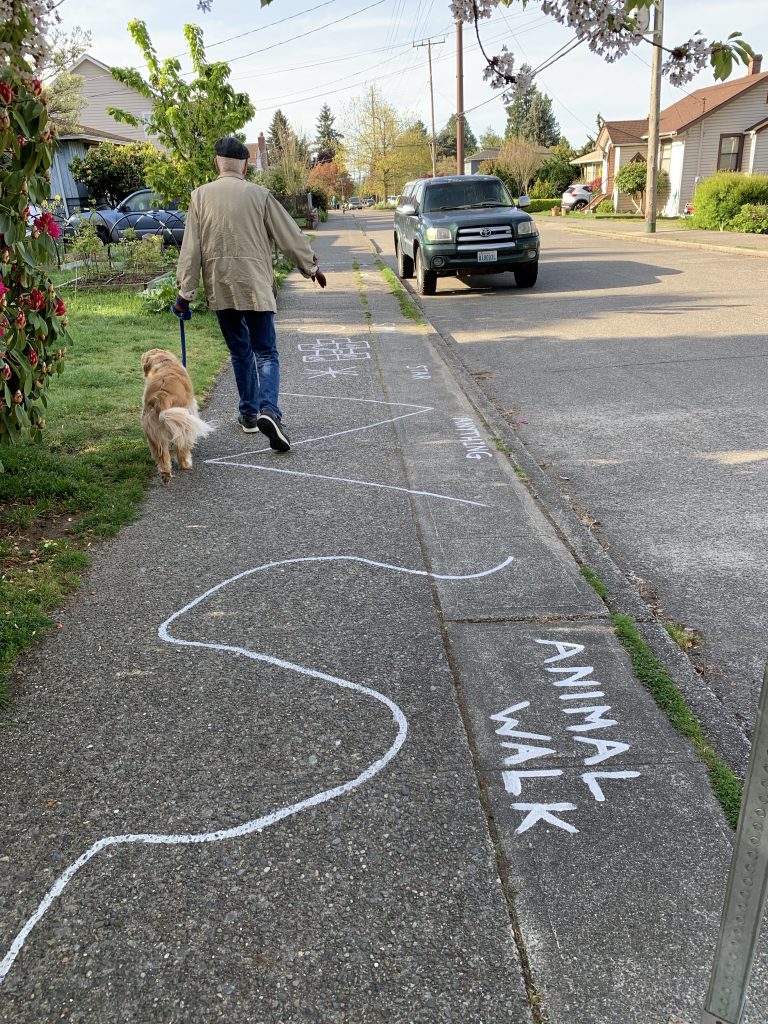
Awe and wonder walk
Now Tom and I follow our morning devotions with a 2 mile “awe and wonder walk” around the neighborhood…. Kind of extending our “hallowed be thy name practice. We point out to each other the things that give us a sense of awe and of course with the beautiful array of spring flowers at the moment that is not hard. However I have also found that changing my focus each week – so that one week I reflect on color and beauty, another on fragrance, another on texture and so on can also help. I have even had a week of focusing on the weeds in the pavement cracks – reminding myself that even here God plants gardens and beauty.
So now my gratitude practice happens over the breakfast table with that foundational assurance of the holiness and majesty of God. Tom and I share about what we are grateful for… and then we pray for others. Even those prayers have been reconfigured as I change my view of God. A friend once told me that when she prays for disasters, struggling people and crisis situations she starts with “what is God already doing to respond to this situation? How can I join in?”
I find that changing my perspective from “why did God let this happen” (an unanswerable question that I often think gives us an excuse to do nothing) to “What are the God sightings in the midst of it”? totally changes my perspective of the situation and my perspective of God in the midst of it. It is a joy to join God in the work that God is already accomplishing through the gifts and efforts of others. It is a joy too to realize that I am not alone in the efforts. Our magnificent and awe inspiring God has a whole host of labourers responding in the midst of crisis.
I am posting the Taize contemplative service for the Sixth Sunday of Easter from Saint Andrews Episcopal church in Seattle. I continue to find these enriching and nourishing and am pleased to see how many of you do too. I encourage you to visit their YouTube channel and check out the other resources for prayer and worship they provide, . Fr. Rich Weyls, Rector, prayer leader, with music by Kester Limner and Andy Myers. Permission to web stream or podcast music in this service is granted under One License number A-710-756. www.saintandrewsseattle.org
The heart has its tributaries,
rivers deep, carved through stony ground.
And the heart has its flowering branches,
The heart has its heights,
where the view is worth the walk. And the closed path
opens out.
Yes, from the hill,
where vistas unwrap like scrolls laid out upon the ground,
I see how the landscape reflects the hidden self’s core.
And why not?
Why should the view without not be a sort of mirror,
or map to navigate by.
I think I will see my heart
in how the rivers flow and connect.
In how the trees will rise up from inhospitable ground.
I will watch the way
hills fold, mount up
to fall like ocean’s waves.
And the sudden view,
that surprises through the trees, will reveal how the heart
has its many layers
of pages.
Different scenes,
that hold threads of continuity
like words crossing a divide.
Yes, the heart has its tributaries,
and the landscape is the hidden self, exposed.
Maybe that’s why
catching a glimpse
of ourselves,
is like looking through clouds at a long familiar face.
And connection,
feels like rivers might
as they flood out to the sea’s edge, and find themselves a small part of something entirely whole.
Copyright Ana Lisa de Jong – Living Tree Poetry
To read more from Talking About the Sun – Poetry from Nature, click the free product below to download.
Maybe there is a garden in my thoughts.
I know my soul,
in deciding what to do,
will follow the way of light through the trees,
will seek the singing bird.
Will kneel in the loam and thank the fallow earth for seeds, trust the winds.
Yes, there is a garden in my thoughts. And I learn the seasons
by watching the leaves.
There is no noise,
but the breeze brushing the foliage, the bird’s call,
its forage for food amongst leaf mulch, the rustling of the
earthen floor.
And I realise, everything is here, death, birth,
the spaciousness of life.
The rooted things,
that remind us to plant ourselves, branch out to a shape defined
by who we are,
the replication of cells, the grace gift, enough.
The pattern of leaves,
and the direction of veins –
a path to follow from root to tip.
And the singing bird,
making a home in the universe.
There is a garden in my thoughts.
Poetry for a Pandemic – Ana Lisa de Jong
Download the free collection through our store by clicking below.
By Lilly Lewin
When I need to process things, it helps me to draw/sketch and color.
I drew the picture above a couple of days ago & it’s inviting me to pay attention & take notice of what I am feeling in the middle of all that is this pandemic.
Also, this drawing sparks many questions for me to ponder and talk to Jesus about as I imagine the treasure chest, the ocean, the seashore, etc.
Maybe some of these questions can help you slow down & notice too.
In the midst of #covid19, what are you experiencing in these strange new seas we are navigating?
What are the hidden treasures you are discovering during this crazy season?
What are you learning about yourself during quarantine?
Are you swimming or treading water?
What have you discovered buried, but now surfacing?
What are the sharks that have circled you?
What have been the beautiful fish to enjoy?
What “shells” have you collected along the way?
What treasures have you found?
Could you find some treasure buried in the depth of the ocean of uncertainty?
Could the treasure chest of gifts be bigger than the fears, frustrations, and uncertainties beneath the waves?
Ask Jesus to show you.
This reminds me that
where your treasure is, there will your heart be too.
I’m reminded that
Jesus walked on water
Jesus calmed the stormy seas
Jesus provided an abundance of fish for his friends after they’d fished all night and not caught anything.
And Jesus already has the breakfast cooked on the beach ready for you and me to receive.
What does this sketch say to you today?
What images are speaking to you in the midst of covid19?
Why not get your crayons or markers out and do some coloring this weekend and invite the Holy Spirit to inspire you!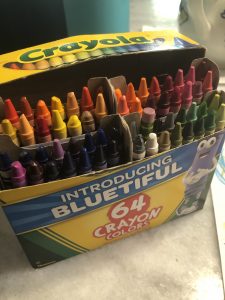
©lillylewin and freerangeworship.com
As an Amazon Associate, I receive a small amount for purchases made through appropriate links.
Thank you for supporting Godspace in this way.
When referencing or quoting Godspace Light, please be sure to include the Author (Christine Sine unless otherwise noted), the Title of the article or resource, the Source link where appropriate, and ©Godspacelight.com. Thank you!



